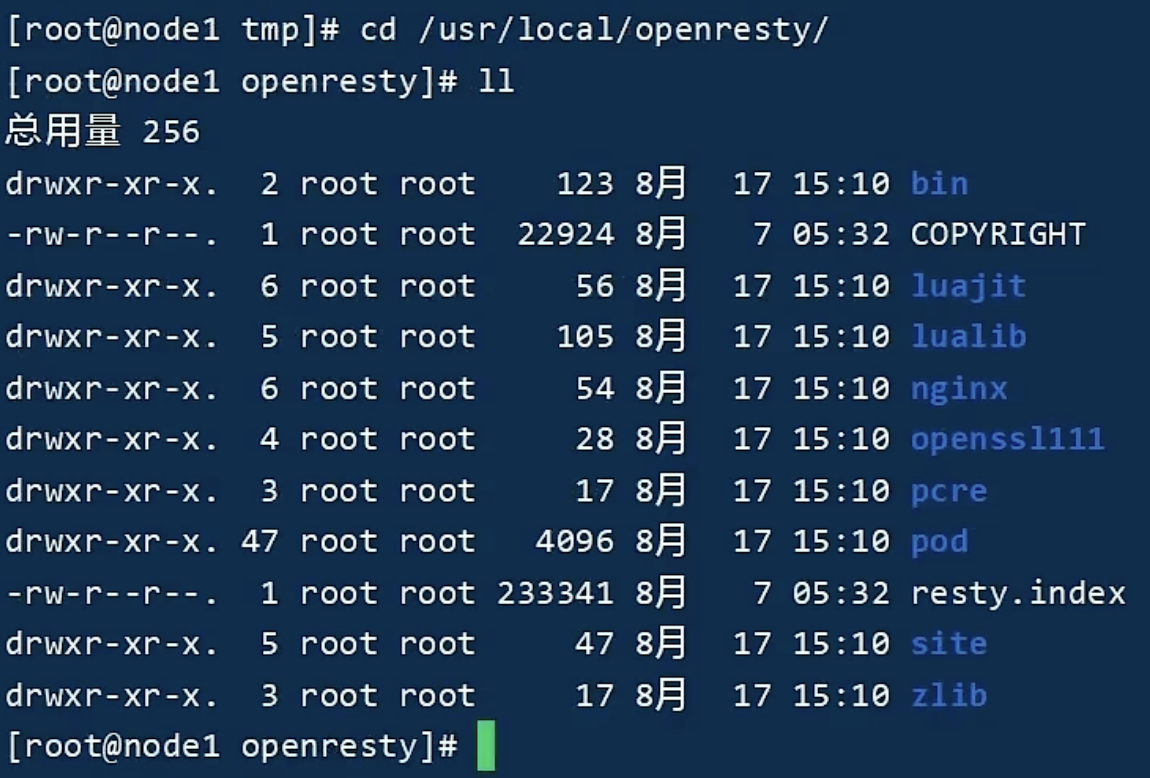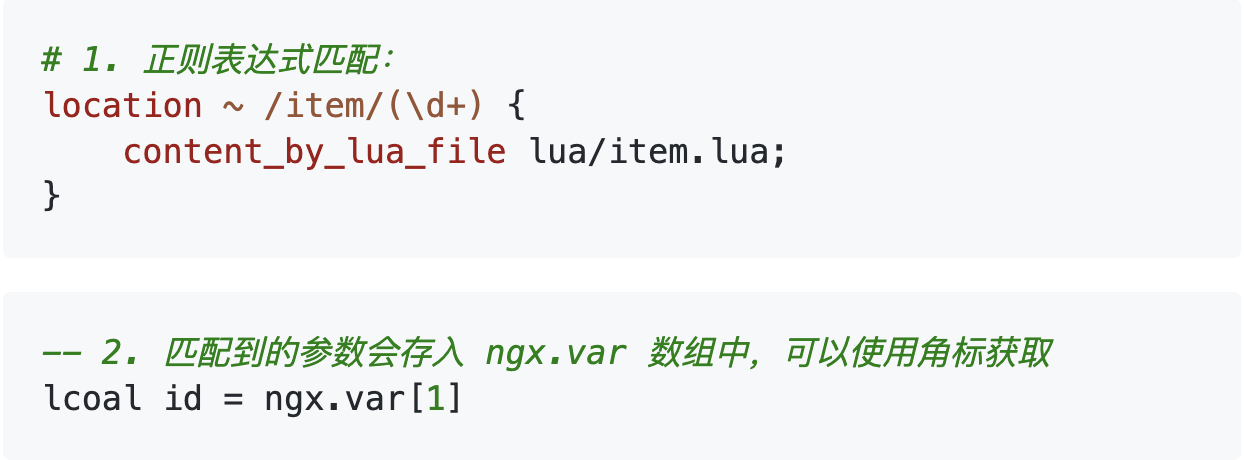Redis进阶 - 多级缓存
Redis进阶 - 多级缓存
安装OpenResty
在正式安装 OpenResty 之前,我们需要了解它是干什么的。
OpenResty® 是一个基于 Nginx 与 Lua 的高性能 Web 平台,其内部集成了大量精良的 Lua 库、第三方模块以及大多数的依赖项。用于方便地搭建能够处理超高并发、扩展性极高的动态 Web 应用、Web 服务和动态网关。
OpenResty® 通过汇聚各种设计精良的 Nginx 模块(主要由 OpenResty 团队自主开发),从而将 Nginx 有效地变成一个强大的通用 Web 应用平台。这样,Web 开发人员和系统工程师可以使用 Lua 脚本语言调动 Nginx 支持的各种 C 以及 Lua 模块,快速构造出足以胜任 10K 乃至 1000K 以上单机并发连接的高性能 Web 应用系统。
OpenResty® 的目标是让你的Web服务直接跑在 Nginx 服务内部,充分利用 Nginx 的非阻塞 I/O 模型,不仅仅对 HTTP 客户端请求,甚至于对远程后端诸如 MySQL、PostgreSQL、Memcached 以及 Redis 等都进行一致的高性能响应。
OpenResty官网:https://openresty.org/cn/
1.安装
首先你的Linux虚拟机必须联网
- 安装开发库
首先要安装OpenResty的依赖开发库,执行命令:
yum install -y pcre-devel openssl-devel gcc --skip-broken
- 安装OpenResty仓库
你可以在你的 CentOS 系统中添加 openresty 仓库,这样就可以便于未来安装或更新我们的软件包(通过 yum check-update 命令)。运行下面的命令就可以添加我们的仓库:
yum-config-manager --add-repo https://openresty.org/package/centos/openresty.repo
如果提示说命令不存在,则运行:
yum install -y yum-utils
然后再重复上面的命令
- 安装OpenResty
然后就可以像下面这样安装软件包,比如 openresty:
yum install -y openresty
- 安装opm工具
opm是OpenResty的一个管理工具,可以帮助我们安装一个第三方的Lua模块。
如果你想安装命令行工具 opm,那么可以像下面这样安装 openresty-opm 包:
yum install -y openresty-opm
- 目录结构
默认情况下,OpenResty安装的目录是:/usr/local/openresty

看到里面的nginx目录了吗,OpenResty就是在Nginx基础上集成了一些Lua模块。
- 配置nginx的环境变量
打开配置文件:
vi /etc/profile
在最下面加入两行:
export NGINX_HOME=/usr/local/openresty/nginx
export PATH=${NGINX_HOME}/sbin:$PATH
NGINX_HOME:后面是OpenResty安装目录下的nginx的目录
然后让配置生效:
source /etc/profile
2.启动和运行
OpenResty底层是基于Nginx的,查看OpenResty目录的nginx目录,结构与windows中安装的nginx基本一致:

所以运行方式与nginx基本一致:
# 启动nginx
nginx
# 重新加载配置
nginx -s reload
# 停止
nginx -s stop
nginx的默认配置文件注释太多,影响后续我们的编辑,这里将nginx.conf中的注释部分删除,保留有效部分。
修改/usr/local/openresty/nginx/conf/nginx.conf文件,内容如下:
#user nobody;
worker_processes 1;
error_log logs/error.log;
events {
worker_connections 1024;
}
http {
include mime.types;
default_type application/octet-stream;
sendfile on;
keepalive_timeout 65;
server {
listen 8081;
server_name localhost;
location / {
root html;
index index.html index.htm;
}
error_page 500 502 503 504 /50x.html;
location = /50x.html {
root html;
}
}
}
在Linux的控制台输入命令以启动nginx:
nginx
然后访问页面:http://192.168.150.101:8081,注意ip地址替换为你自己的虚拟机IP:
3.备注
- 加载OpenResty的lua模块
#lua 模块
lua_package_path "/usr/local/openresty/lualib/?.lua;;";
#c模块
lua_package_cpath "/usr/local/openresty/lualib/?.so;;";
- common.lua
-- 封装函数,发送http请求,并解析响应
local function read_http(path, params)
local resp = ngx.location.capture(path,{
method = ngx.HTTP_GET,
args = params,
})
if not resp then
-- 记录错误信息,返回404
ngx.log(ngx.ERR, "http not found, path: ", path , ", args: ", args)
ngx.exit(404)
end
return resp.body
end
-- 将方法导出
local _M = {
read_http = read_http
}
return _M
- 释放Redis连接API:
-- 关闭redis连接的工具方法,其实是放入连接池
local function close_redis(red)
local pool_max_idle_time = 10000 -- 连接的空闲时间,单位是毫秒
local pool_size = 100 --连接池大小
local ok, err = red:set_keepalive(pool_max_idle_time, pool_size)
if not ok then
ngx.log(ngx.ERR, "放入redis连接池失败: ", err)
end
end
- 读取Redis数据的API:
-- 查询redis的方法 ip和port是redis地址,key是查询的key
local function read_redis(ip, port, key)
-- 获取一个连接
local ok, err = red:connect(ip, port)
if not ok then
ngx.log(ngx.ERR, "连接redis失败 : ", err)
return nil
end
-- 查询redis
local resp, err = red:get(key)
-- 查询失败处理
if not resp then
ngx.log(ngx.ERR, "查询Redis失败: ", err, ", key = " , key)
end
--得到的数据为空处理
if resp == ngx.null then
resp = nil
ngx.log(ngx.ERR, "查询Redis数据为空, key = ", key)
end
close_redis(red)
return resp
end
- 开启共享词典:
# 共享字典,也就是本地缓存,名称叫做:item_cache,大小150m
lua_shared_dict item_cache 150m;
OpenResty快速入门
这里我们使用 nginx 拦截 http 请求,处理后返回数据。
步骤1 修改nginx.conf文件
- 在 nginx.conf 的 http 下面,添加对 OpenResty 的 Lua 模块支持
# 加载 lua 模块
lua_package_path "/usr/local/openresty/lualib/?.lua;;";
# 加载 c 模块
lua_package_cpath "/usr/local/openresty/lualib/?.so;;";
- 在 nginx.conf 的 serevr 下面,添加对 /api/item 这个路径的监听:
location /api/item {
# 响应类型,这里返回 json
default_type application/json
# 响应数据由 lua/item.lua 这个文件来决定
content_by_lua_file lua/item.lua;
}
步骤2 编写item.lua文件
- 在 nginx 目录创建文件夹:lua
mkdir lua
- 在 lua 文件夹下,新建文件:item.lua
touch lua/item.lua
- 内容如下
-- 返回假数据,这里的 ngx.say() 函数,就是写数据到 Response 中
ngx.say('{"id": 10001, "name" : "Coder Mast"}');
- 重新加载配置
nginx -s reload
OpenResty获取请求参数
OpenResty 提供了各种 API 用来获取不同类型的请求参数:
| 参数格式 | 参数示例 | 参数解析代码示例 |
|---|---|---|
| 路径占位符 | /item/1001 |  |
| 请求头 | id:1001 | |
| Get请求参数 | ?id=1001 | |
| Post表单参数 | id=1001 | |
| Json参数 | {"id":1001} |
代码详情
- 路径占位符
# 1. 正则表达式匹配:
location ~ /item/(\d+) {
content_by_lua_file lua/item.lua;
}
-- 2. 匹配到的参数会存入 ngx.var 数组中,可以使用角标获取
lcoal id = ngx.var[1]
请求头
Get请求参数
Post表单参数
Json参数